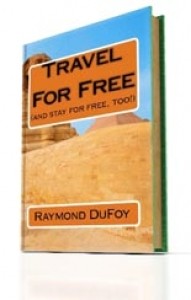
 License Type: Private Label Rights
License Type: Private Label Rights  File Type: ZIP
File Type: ZIP
 SKU: 5216
SKU: 5216  Shipping: Online Download
Shipping: Online Download
Ebook Sample Content Preview:
OBTAINING FREE TRAVEL / FREE STAYS / PRESS TRIPS
You just need to contact the people in this book, once you’ve found the resort, tour, hotel, press trip etc that you want to go on.
Give them your name and contact details and where your story or pictures will hopefully appear.
If the trip is abroad, supply your passport details as they will need these for your air tickets.
For press trips, you’ll get a full itinerary about a week before you leave.
If you’re visiting an area / country independently, they will always arrange hotels, meals, tours, visits, entries to museums etc for you – just say what you’d like to see – or ask them to make suggestions.
ABOUT SELLING YOUR PHOTOS
In order to increase your chances of selling an image, it’s important to know the differences between stock, editorial, and fine art images.
And, at the same time, it’s important to know that many images will sell well to more than one market.
Although “stock” images technically include all images that are NOT photographed for a specific client or use (that is, photos you haven’t
been commissioned to create), the term “stock” is commonly used to describe images that are in the collections of stock photography agencies.
These images are often purchased from stock photo houses by a variety of clients - from companies looking to create new ad campaigns or websites … to state tourism departments for use in a vacation guide … to magazines and newspapers looking to illustrate an article… to high-school students looking for images to illustrate a book report.
Because competition among agencies is stiff, stock houses often accept only images that are technically perfect and require that photographers provide the appropriate model (and where necessary) property releases.
And, because images need to be technically perfect, it’s often the photographers with more expensive equipment that make the most money.
Their images can be sold in larger formats (which cost more and therefore bring in higher commissions) and higher-end cameras often do
a better job at creating technically perfect images in low light and extreme lighting conditions.
Editorial images, on the other hand, are the kind you submit together with a travel article or magazine story idea.
They’re used to help illustrate a story.
And, they’re typically reviewed as one piece of the whole.
As a result, they don’t typically need to tell a story independently.
They can be combined to tell a story and they’re usually accompanied by a caption of what they depict.
Most camera types (from cellphones to SLR models) are able to produce the type and size of digital files required by magazines (8x12 TIFFs @ 300 dpi is a common request).
And, releases are not usually required.
Editorial images are in this sense easier to license, since releases are often difficult to obtain.
Of the different types of photographs I license, the best-selling for me is the editorial type.
Here are a few tips to help you increase your sales of these images:
Shoot locally:
Let’s face it, everyone photographs icons, and you should, too, because they sell.
The trick is to photograph icons in unique or different ways.
Living close to a particular icon will give you an advantage most other photographers don’t have.
I have an image of the Statue of Liberty, under heavy snow, which I have sold many times to magazines and tourism publications.
After a huge snowstorm, I snow-shoed to the perfect overlook and took a variety of images in unique (snowy) conditions.
“Shoot with a shotgun first, a rifle later”. Especially when starting out, your image collection will need, well, everything.
Remember that icon near your house?
Photograph it vertically, horizontally, at an angle, with people, without people, in winter, in summer, its details, you name it.
Make sure you take these pictures in nice light and that your compositions are strong.
Repeat with the next subject.
Let local publications know you exist.
Once you have enough images of area subjects, send a selection of 20 images or so to the local magazines, state tourism department, and other local publications that might have a need for tourism-related images.
Let them know that you are a local photographer with fresh images and that you would appreciate being on their photographers’ mailing list.
Once you get on a handful of these lists, you will be on your way to licensing your images.
Keep Shooting: Things change.
The picture you have of the local shopping scene with everyone wearing bell-bottoms and long hair is now an “historic” photograph (and you should keep it for later).
Keep your collection fresh by re-photographing the same or similar subjects on a regular basis.







